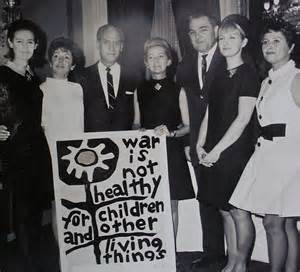By Thien-Kim Lam
The only wine we had was a bottle of cheap Pinot Noir that was a holiday gift from my husband's boss. It was disgusting, but my husband was willing to take one for the team and drink a glass in his role as Christian Grey.
Yes, the billionaire Christian Grey from the famous (infamous?) E.L. James erotica that swept the nation over three years ago. While many of my friends binge-read Fifty Shades of Grey, pausing long enough to cook up a box of organic mac and cheese for their kids' dinner, up until now, I'd only managed a handful of pages before tears of laughter blurred out the words. I'm no stranger to erotica but James' writing was too juvenile and cheesy for my taste.
Or so I thought.
More from YourTango: 9 REALLY Obvious Things We Want Guys To Do More Often In Bed
With the film adaptation in theaters next month, I decided to give the book another chance. After all, how bad could a pseudo-BDSM book dubbed "mommy porn" be? Heck, I could even ask my husband to reenact one of its sex scenes. We were both theatre majors so it wouldn't be too difficult to play Christian and Anastasia...would it?
After skimming the first half of the book, I opted for the sex scene in Chapter 12. (Mostly because I couldn't bear to read any more, and I wouldn't need too many "props.") In this scene, Anastasia has just returned from a run in her ratty sweats and presumably her granny panties when Christian unexpectedly arrives at her apartment. In response to a snarky email she's sent, he's come in person to show her who's boss. Spoiler alert: Christian's the boss.
To prepare for our dramatization, I wrote the Cliff Notes version of the scene so my husband knew what to do:
1. Tie Anastasia (me) to bed with grey silk tie.
2. Pull shirt over my face.
3. Leave room for glass of wine with ice cubes (sidebar: why the hell would a wine connoisseur put ice in his wine?)
4. Swap spit kiss wine + ice via mouth to mouth.
5. Pour wine into my belly button. (I'm assuming Anastasia has an innie and glad I have one too. Seems integral.)
6. Kiss me all over.
7. Do it doggy-style.
More from YourTango: 10 Hints All Men Give That They're NOT Happy In The Bedroom
To summarize: I have to be tied to my bed, blindfolded by having my shirt pulled over my head, and be teased by wine and ice all over my body. Wine will then be placed into my belly button and I'm not supposed to spill any or Christian, my husband, won't let me orgasm. But alas, Anastasia (me) writhes too much and spills the wine. Christian teases her some more and powerfully flips her over (while still tied to the bed) for the best sex of her life. Everyone gets their happy ending.
Yeah, we can do this. We can be Anastasia and Christian.
We opted for a red polyester tie that my husband wears once a year. (I didn't think paisley was a good look for my wrists.) I donned yoga pants and an old T-shirt pockmarked with holes. Close enough to sweatpants and granny panties. The only other prop we needed was a glass of wine with ice. Yes, wine with ice. I haven't put ice in my wine since I drank Boone's Farm at our college theatre parties so instead of the acidic Pinot Noir, I suggested we go with my husband's single malt scotch.
The kids were sleeping soundly in their bed. We gathered all our props. The Cliff Notes were on my husband's nightstand. Finally, we were ready to act out our roles, step-by-step:
Step 1: As my husband wraps the silky tie around my wrists, we realize our bed has no posts of any kind. Our mattress is set on the floor so he can't even tie me to the bed frame or leg. I decide to put my arms over my head and pretend they're tied to an imaginary wrought iron headboard.
Step 2: He grabs the hem of my T-shirt and pulls it over my face. "I can't breathe!" I gasp. He tug the shirt to free my mouth and nose. Ahhh, fresh air. (Who says chivalry is dead?) I suddenly remember something important from Chapter 12. "Wait!" I blurt from behind my T-shirt. "You're supposed to smack my ass in Step 7, like Christian did. I forgot to write it down."
Step 3: I hear him pick up the index card. "You can't even remember what's next!" I chuckled. I listen to him exit our bedroom and head to the kitchen. He's reaches into the freezer for ice cubes, but I suddenly hear loud whacks emanate from down the hall. It sounds like he's spanking. Wait, he's spanking the ice cubes. They're too big to be placed into my mouth and my belly button so he's crushing them with a giant spoon.
Step 4: "Did you miss me?" my husband asks in what I assume is his lecherous billionaire voice. "Shhh, don't talk. You'll make me laugh and ruin the mood." I declare silence for the rest of the steps. He kisses me and releases the cool, golden scotch into my mouth. Sweet Jesus, that was some good scotch.
Step 5: Again, the sound of the damn index card. That thwip, thwip sound is ruining my fantasy. Setting it down, he deposits a piece of well-spanked ice and scotch into my belly button. It's effing FREEZING.
Step 6: At this point I'd like to tell you we followed the script, but husband threw away the index card. After twelve years of marriage, my husband knows all my hot buttons. In the heat of the moment, he even gave my butt a big ole whack (just one, lest we burst into giggles again). We improvised with much success. Multiple successes. (Wink.)
More from YourTango: I Had Sex In The Snow And Holy Frostbite, NEVER AGAIN
As my husband drifted to sleep during our post-coital snuggle, he whispers, "I guess Anastasia and Christian aren't so bad after all." And you know what? He was right.
Reading Fifty Shades of Grey didn't light my loins on fire like Christian did for Anastasia, however...
...Attempting something different in the bedroom brought the fun back into our sex life by forcing us to slow down and enjoy each kiss, each touch, fumbling and all. We'd gotten into a rut without realizing it. My husband's long work hours coupled with my late nights working in my home office meant we were usually too exhausted to make love. When we did muster enough energy, most sessions, while satisfying, did not yield mind-blowing sex. Although it took work to find our props and spank the ice cubes into submission, our low (very low) expectations for the role-playing took the pressure off.
I don't plan on reading the other half of the book, but I did learn one important thing from E. L. James:
Being able to laugh in the bedroom is just important as being able to moan with pleasure.
This article originally appeared on YourTango.
The only wine we had was a bottle of cheap Pinot Noir that was a holiday gift from my husband's boss. It was disgusting, but my husband was willing to take one for the team and drink a glass in his role as Christian Grey.
Yes, the billionaire Christian Grey from the famous (infamous?) E.L. James erotica that swept the nation over three years ago. While many of my friends binge-read Fifty Shades of Grey, pausing long enough to cook up a box of organic mac and cheese for their kids' dinner, up until now, I'd only managed a handful of pages before tears of laughter blurred out the words. I'm no stranger to erotica but James' writing was too juvenile and cheesy for my taste.
Or so I thought.
More from YourTango: 9 REALLY Obvious Things We Want Guys To Do More Often In Bed
With the film adaptation in theaters next month, I decided to give the book another chance. After all, how bad could a pseudo-BDSM book dubbed "mommy porn" be? Heck, I could even ask my husband to reenact one of its sex scenes. We were both theatre majors so it wouldn't be too difficult to play Christian and Anastasia...would it?
After skimming the first half of the book, I opted for the sex scene in Chapter 12. (Mostly because I couldn't bear to read any more, and I wouldn't need too many "props.") In this scene, Anastasia has just returned from a run in her ratty sweats and presumably her granny panties when Christian unexpectedly arrives at her apartment. In response to a snarky email she's sent, he's come in person to show her who's boss. Spoiler alert: Christian's the boss.
To prepare for our dramatization, I wrote the Cliff Notes version of the scene so my husband knew what to do:
1. Tie Anastasia (me) to bed with grey silk tie.
2. Pull shirt over my face.
3. Leave room for glass of wine with ice cubes (sidebar: why the hell would a wine connoisseur put ice in his wine?)
4. Swap spit kiss wine + ice via mouth to mouth.
5. Pour wine into my belly button. (I'm assuming Anastasia has an innie and glad I have one too. Seems integral.)
6. Kiss me all over.
7. Do it doggy-style.
More from YourTango: 10 Hints All Men Give That They're NOT Happy In The Bedroom
To summarize: I have to be tied to my bed, blindfolded by having my shirt pulled over my head, and be teased by wine and ice all over my body. Wine will then be placed into my belly button and I'm not supposed to spill any or Christian, my husband, won't let me orgasm. But alas, Anastasia (me) writhes too much and spills the wine. Christian teases her some more and powerfully flips her over (while still tied to the bed) for the best sex of her life. Everyone gets their happy ending.
Yeah, we can do this. We can be Anastasia and Christian.
We opted for a red polyester tie that my husband wears once a year. (I didn't think paisley was a good look for my wrists.) I donned yoga pants and an old T-shirt pockmarked with holes. Close enough to sweatpants and granny panties. The only other prop we needed was a glass of wine with ice. Yes, wine with ice. I haven't put ice in my wine since I drank Boone's Farm at our college theatre parties so instead of the acidic Pinot Noir, I suggested we go with my husband's single malt scotch.
The kids were sleeping soundly in their bed. We gathered all our props. The Cliff Notes were on my husband's nightstand. Finally, we were ready to act out our roles, step-by-step:
Step 1: As my husband wraps the silky tie around my wrists, we realize our bed has no posts of any kind. Our mattress is set on the floor so he can't even tie me to the bed frame or leg. I decide to put my arms over my head and pretend they're tied to an imaginary wrought iron headboard.
Step 2: He grabs the hem of my T-shirt and pulls it over my face. "I can't breathe!" I gasp. He tug the shirt to free my mouth and nose. Ahhh, fresh air. (Who says chivalry is dead?) I suddenly remember something important from Chapter 12. "Wait!" I blurt from behind my T-shirt. "You're supposed to smack my ass in Step 7, like Christian did. I forgot to write it down."
Step 3: I hear him pick up the index card. "You can't even remember what's next!" I chuckled. I listen to him exit our bedroom and head to the kitchen. He's reaches into the freezer for ice cubes, but I suddenly hear loud whacks emanate from down the hall. It sounds like he's spanking. Wait, he's spanking the ice cubes. They're too big to be placed into my mouth and my belly button so he's crushing them with a giant spoon.
Step 4: "Did you miss me?" my husband asks in what I assume is his lecherous billionaire voice. "Shhh, don't talk. You'll make me laugh and ruin the mood." I declare silence for the rest of the steps. He kisses me and releases the cool, golden scotch into my mouth. Sweet Jesus, that was some good scotch.
Step 5: Again, the sound of the damn index card. That thwip, thwip sound is ruining my fantasy. Setting it down, he deposits a piece of well-spanked ice and scotch into my belly button. It's effing FREEZING.
Step 6: At this point I'd like to tell you we followed the script, but husband threw away the index card. After twelve years of marriage, my husband knows all my hot buttons. In the heat of the moment, he even gave my butt a big ole whack (just one, lest we burst into giggles again). We improvised with much success. Multiple successes. (Wink.)
More from YourTango: I Had Sex In The Snow And Holy Frostbite, NEVER AGAIN
As my husband drifted to sleep during our post-coital snuggle, he whispers, "I guess Anastasia and Christian aren't so bad after all." And you know what? He was right.
Reading Fifty Shades of Grey didn't light my loins on fire like Christian did for Anastasia, however...
...Attempting something different in the bedroom brought the fun back into our sex life by forcing us to slow down and enjoy each kiss, each touch, fumbling and all. We'd gotten into a rut without realizing it. My husband's long work hours coupled with my late nights working in my home office meant we were usually too exhausted to make love. When we did muster enough energy, most sessions, while satisfying, did not yield mind-blowing sex. Although it took work to find our props and spank the ice cubes into submission, our low (very low) expectations for the role-playing took the pressure off.
I don't plan on reading the other half of the book, but I did learn one important thing from E. L. James:
Being able to laugh in the bedroom is just important as being able to moan with pleasure.
This article originally appeared on YourTango.



























